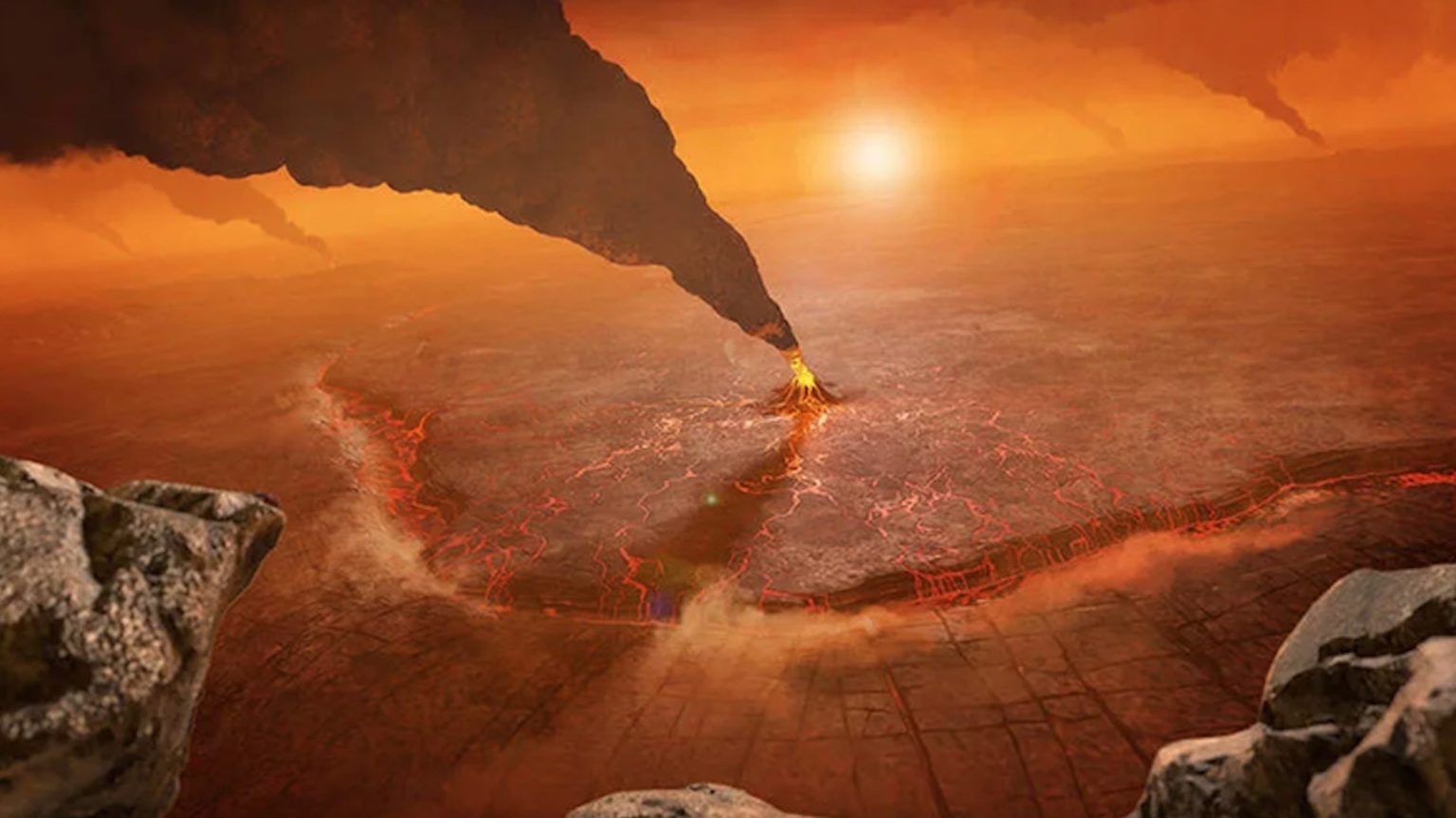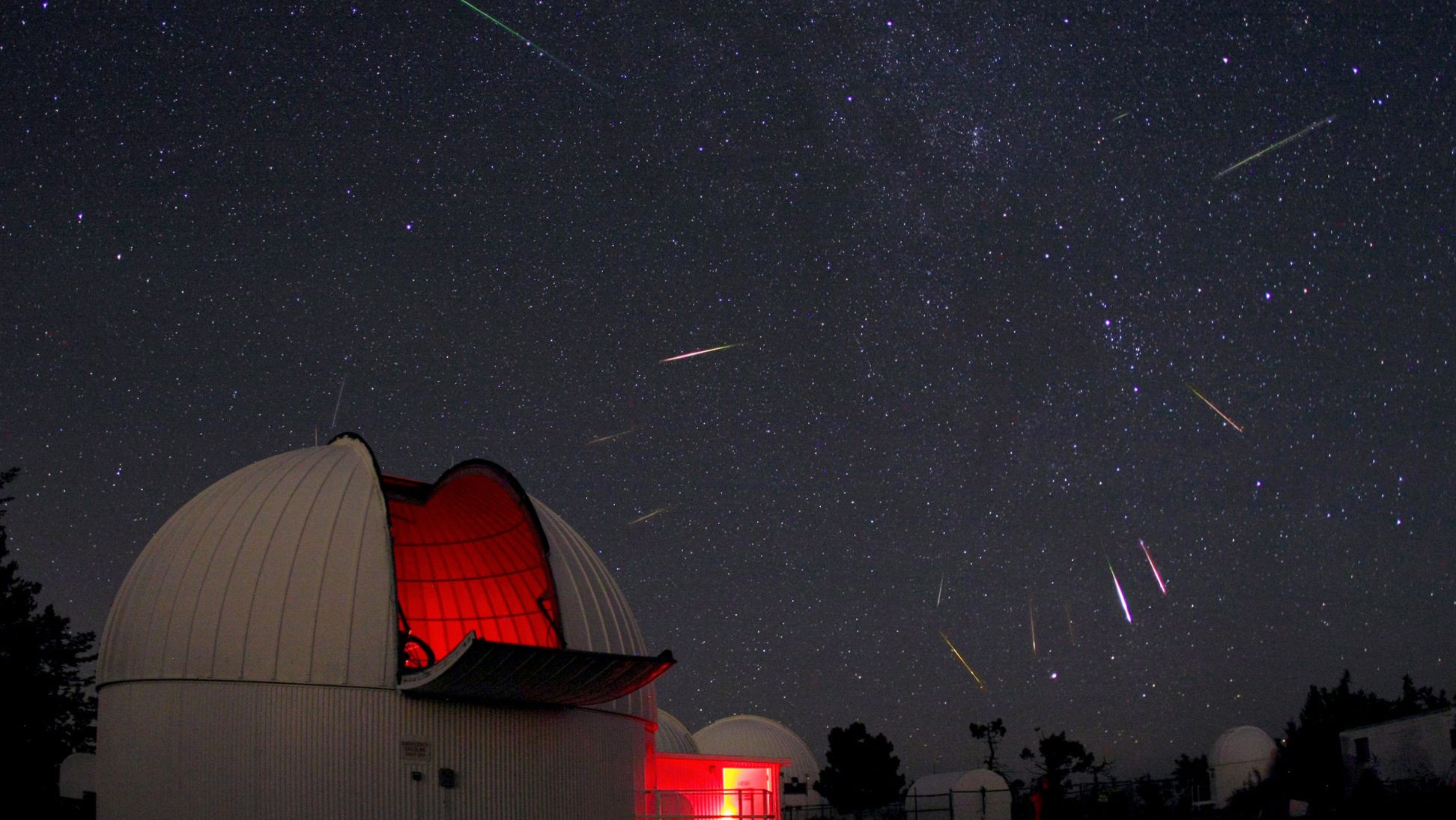5 Sights You Must Take In During The Century’s Longest Total Lunar Eclipse

Gazing upon the red, blood Moon during totality is only part of the wonders awaiting you.
On July 27, 2018, the longest total lunar eclipse of the century took place. Totality lasted for a phenomenal 1 hour, 42 minutes and 57 seconds: only four minutes short of the theoretical, maximum possible duration. The fully-eclipsed phase of the Moon was visible across portions of six continents, with only North America missing out.
While there will be a net 230 lunar eclipses in the 21st century, including 85 total lunar eclipses, there are a special set of conditions that need to all line up to create one that lasts the longest amount of time possible. While the Earth’s shadow often falls near or even on the full Moon, what occurred on that day is something truly special. Here’s the science of what’s going on.

The Earth orbits the Sun in an ellipse, while the Moon revolves around the Earth in its own elliptical orbit. These orbits share some common properties, but are also different in a few important ways.
- The same law of gravity governs both of them, so the orbital speeds are fastest when the two bodies are closest and slowest when they’re most distant.
- The Earth orbits the Sun in a consistent plane and the Moon orbits the Earth in a consistent plane, but these two planes are misaligned by 5.2 degrees.
- The Moon and Sun both take up approximately the same angular size in the sky: around 0.5 degrees, with the amounts varying slightly depending on orbital positions.
- And this is because even though the Sun is 400 times the diameter of the Moon, it’s also, on average, approximately 400 times farther away.

When the Sun, Earth, and Moon all properly align, and the Moon passes completely through the Earth’s umbral shadow, that’s when a total lunar eclipse occurs. But there’s a combination of factors that all come together to make an eclipse as long as possible. Each of these leads to consequences we can observe. For the careful skywatcher, the sights can be rewarding like no other. Here are the top five things you should look for, along with the science of why they matter.

1.) This eclipsed Moon will appear much smaller than a typical full Moon. Although the Moon orbits the Earth in a nearly circular orbit, there’s quite a difference between its closest point to Earth (perigee) and its farthest point from Earth (apogee) in every orbit. We’ve known for over 400 years — since the time of Kepler — that objects revolving at the farthest point in their orbits move the slowest.
If this were true, then the longest lunar eclipse of the century should occur very close to lunar apogee; the slow speed should outweigh the relatively smaller size of Earth’s umbral shadow. This holds up! Lunar apogee occurred on July 27th: the same day as the lunar eclipse, with the Moon a whopping 406,223 km from Earth: just 502 km shy of the maximum possible apogee over the past 5,000 years. At totality, see a Moon 12% smaller in diameter than your largest supermoons!

2.) During maximum totality, the Moon should be unusually, evenly red all around. In order to get a total lunar eclipse, the Moon needs to pass fully into the path of Earth’s shadow. But for the longest eclipse possible, it needs a perfect alignment between the Sun, Earth and Moon; this means the Moon should pass perfectly through the middle of Earth’s umbral shadow.
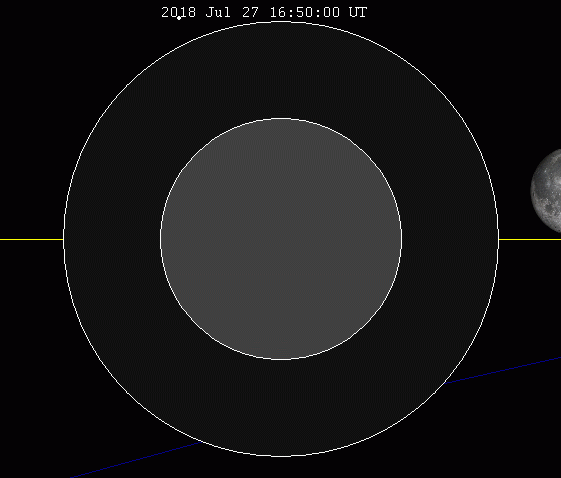
The July 27, 2018 eclipse comes closer than any other eclipse this century to meeting that criterion. At the point of maximum eclipse, which occurred at 20:21:44 Universal Time, the Moon appeared almost perfectly, uniformly red. (It will be just slightly to the north-of-center of the Earth’s shadow.) At other, non-maximal times during this eclipse, as well as during other eclipses, the portions closer to the edge of the Earth’s shadow appear whiter, as less blue light gets scattered away. Enjoy the reddest natural Moon you’ll ever see in your lifetime.
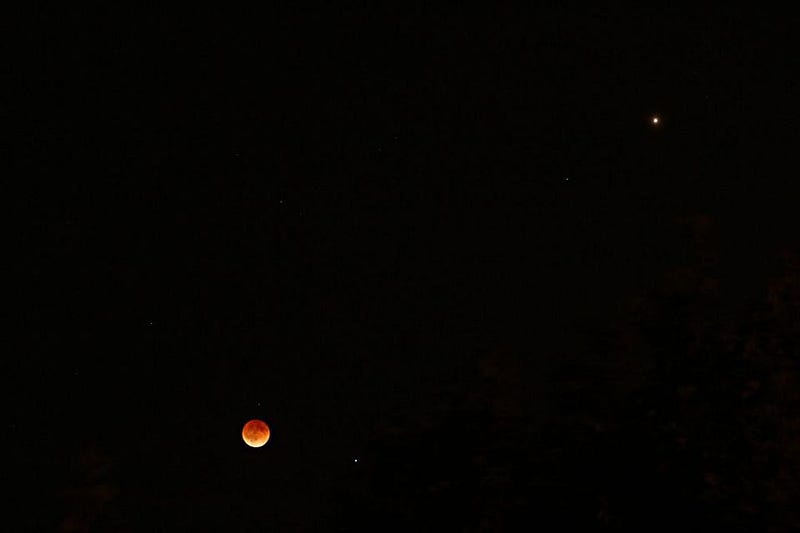
3.) The full, eclipsed Moon was so dim that Mars outshone it. The Moon is normally the brightest object in the night sky, even in a crescent phase. It’s simply too close to Earth, and the sunlight it reflects can turn an otherwise pristine sky into a nightmare for viewing. But during totality, and particularly at maximum totality, it can become even dimmer than a new Moon. This marks the dimmest, faintest state the Moon will achieve all century long.
In astronomy, the full Moon is the brightest thing in the night sky; the fully eclipsed Moon will be some 1,000,000 times fainter. The night of July 27th, it was extremely close to the planet Mars in the sky, which was at opposition. For once, Mars and the Moon will be visible in the same portion of the sky, and Mars will be the brighter of the two, despite being just 1.5% of the Moon’s angular size. The planets Jupiter and Venus also outshone the eclipsed Moon, as did the brightest star: Sirius. Nearby, the planet Saturn and the star Canopus were comparable in brightness to the eclipsed Moon. You’ll never see a full Moon as dim again.
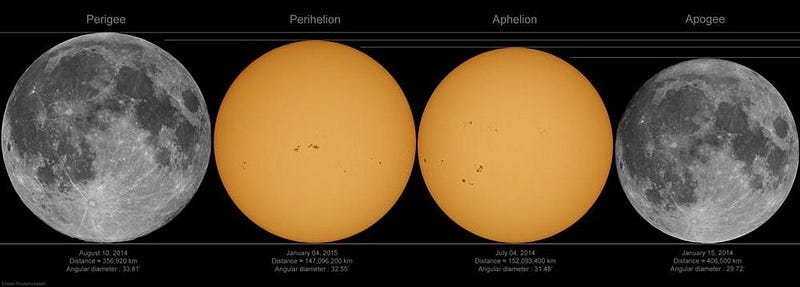
4.) The Sun should be close to its smallest as seen from Earth, too. The Earth, throughout the course of a year, also varies in its distance from the Sun by about 3%, from perihelion (its closest) to aphelion (its farthest). Because the Earth is smaller than the Sun, the shape of its shadow is always a cone. But when the Earth is closer, the cone comes to an end in a shorter distance, while when it’s farther, the cone ends farther away. For the largest, longest shadow cone, we’ll want Earth closest to aphelion.
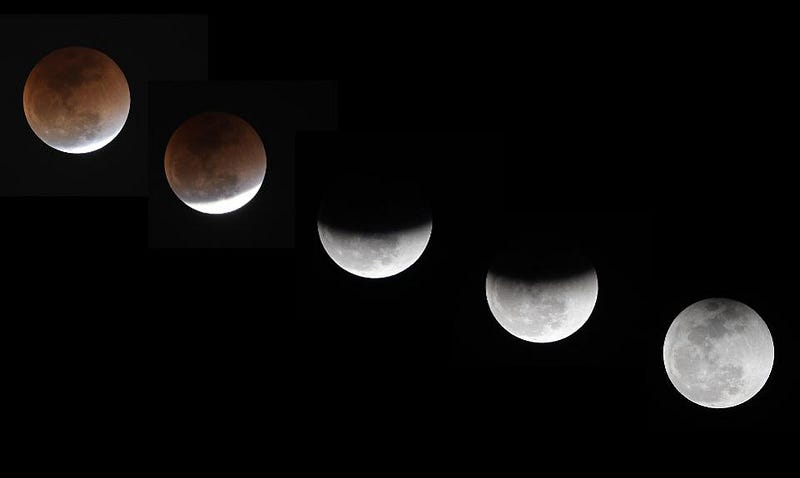
Perihelion, in 2018, occurred on January 3rd, while aphelion was just weeks ago on July 6th. On July 27th, we were still very close to aphelion, meaning that the Sun will still appear smaller than average in the sky, and Earth’s shadow cone was longer than average. You can verify this two ways: by measuring the size of the Sun’s disk directly, during the day, or by looking at the Earth’s shadow on the Moon, and geometrically reconstructing the size of its shadow. Either way, it’s a spectacular observation that a dedicated skywatcher can verify for themselves!
And finally…
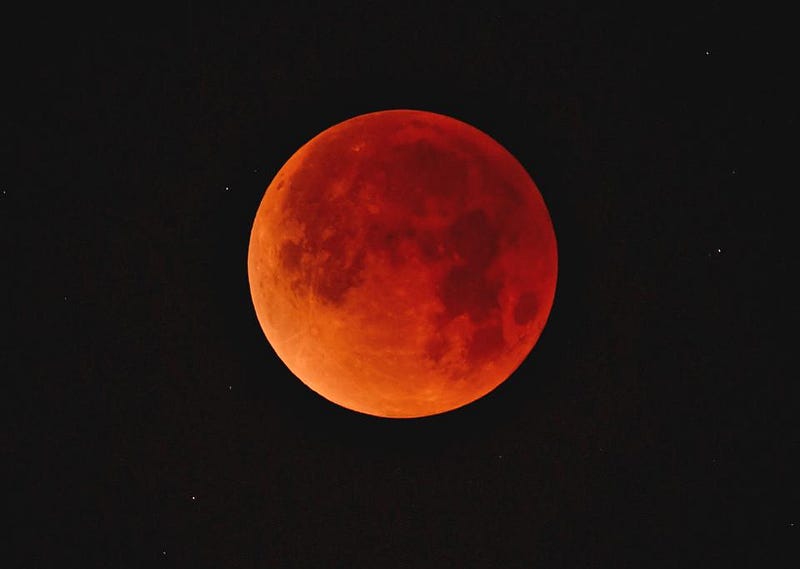
5.) Binoculars or a telescope will allow you to see incredible features of the Moon with no additional filters. Normally, viewing the Moon through binoculars or a telescope is very harsh on the eyes, and impossible without a special lunar filter due to the Moon’s overwhelming brightness. But viewing the Moon during totality, or the partially-eclipsed portion of it before-or-after totality, gives a special treat. Sights you should look for include:
- crater rays emanating from the large, prominent craters Tycho, Copernicus, and Aristarchus,
- all of the lunar maria: the dark features first identified in the earliest days of the telescope,
- the feature changes as the shadow advances and retreats, including crater wall changes, and
- a narrow, blue band at the edge of the shadow, caused by the effects of Earth’s atmosphere. (This is particularly good through a telescope!)
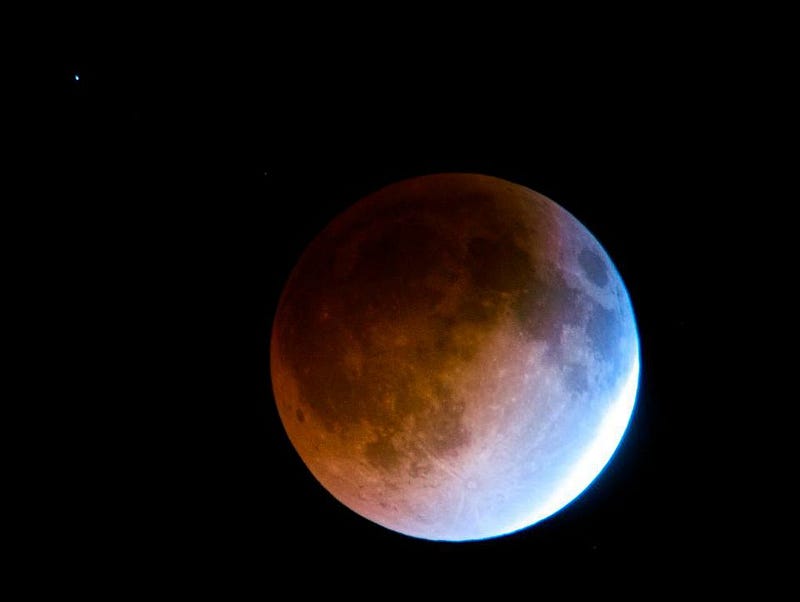
Interestingly, the alignment between the Sun, Earth, and Moon repeats itself every 18 years, 11 days, and 8 hours. The eclipse of July 16, 2000 — the last time this exact alignment occurred — lasted the full 1 hour and 47 minutes. It marked the longest-duration total lunar eclipse that Earth will experience for the next 1,000 years! Residents of North America, or otherwise cloudy or daytime locations, could have still watched a live webcast, but there’s no substitute for experiencing an event like this for yourself. Don’t fret if you couldn’t make it; the next lunar eclipse is just six months away, and you can even join me for it if you like. No matter what, look up and enjoy it; the night sky and all it offers is a treat like no other!
Ethan Siegel is the author of Beyond the Galaxy and Treknology. You can pre-order his third book, currently in development: the Encyclopaedia Cosmologica.


